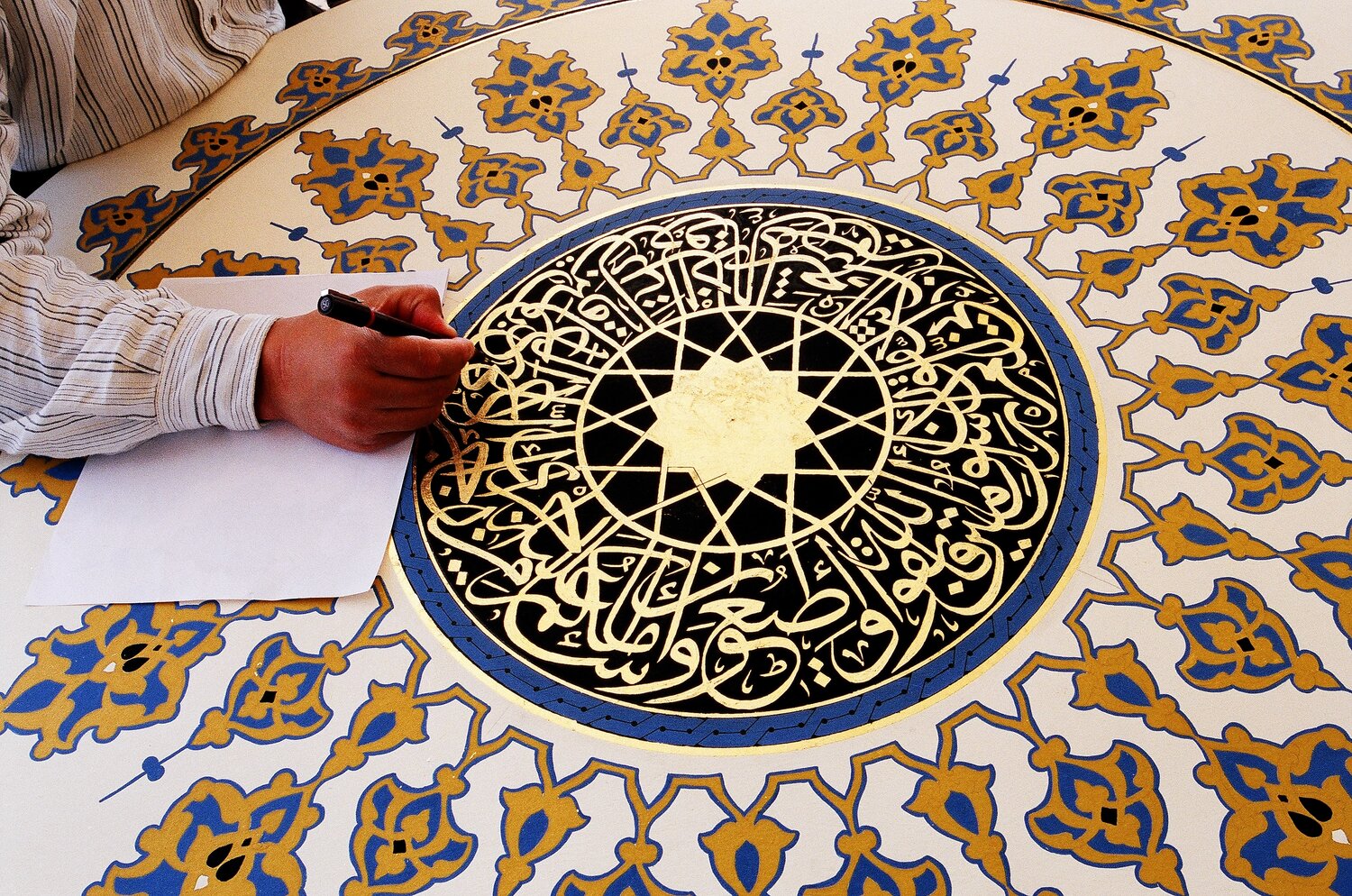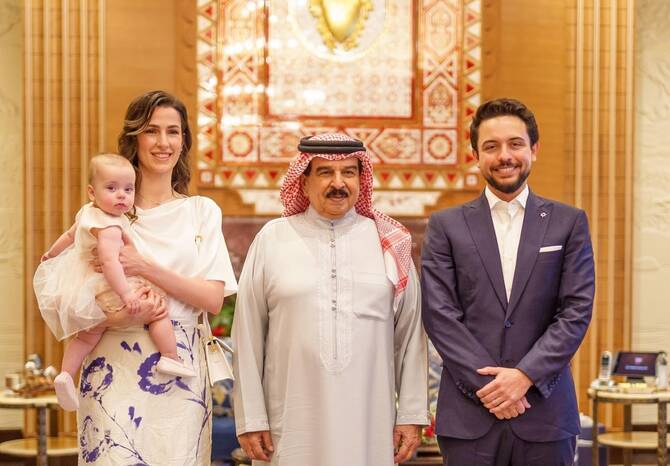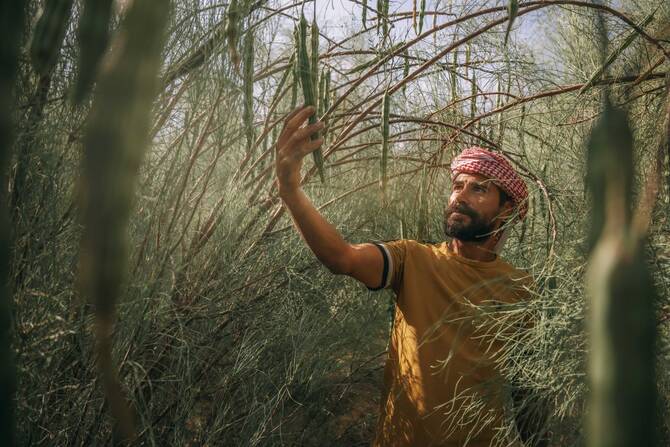The Diriyah Islamic Arts Biennale is a significant cultural event that celebrates the rich traditions and contemporary interpretations of Islamic art. This biennale not only showcases outstanding artworks but also acts as a platform for dialogue and exchange among artists, curators, and enthusiasts worldwide. By elevating voices from diverse backgrounds, it fosters a greater appreciation for the nuances of Islamic artistic expression.
At the heart of this exciting event is the AlMusalla Prize, which recognizes and honors exceptional contributions to the field of Islamic arts. The winner of the inaugural AlMusalla Prize, curated through a meticulous selection process, is a testament to the impactful nature of this cultural gathering. The prize serves to encourage emerging artists and provide them with a spotlight on an international stage.
Among the standout works featured in the biennale is ‘On Weaving’, a thought-provoking installation that combines traditional techniques with contemporary themes. This artwork reflects the intricate relationship between culture and craft, revealing how historical practices can inform modern interpretations and vice versa. The creative process behind ‘On Weaving’ highlights the importance of storytelling and connection through visual art, emphasizing the threads that bind communities together.
Overall, the Diriyah Islamic Arts Biennale plays an essential role in redefining the narrative surrounding Islamic art in the 21st century. It not only serves as a bridge between the past and present but also paves the way for future generations to explore and innovate within this vibrant and endlessly diverse field.
The Journey Of ‘On Weaving’ In The Contemporary Art Scene
The artwork ‘On Weaving’ has emerged as a significant piece in the contemporary art landscape, especially within the context of the Diriyah Islamic Arts Biennale. This biennale is not only a celebration of Islamic art but serves as a platform for artists to engage with audiences on various cultural narratives. The journey of ‘On Weaving’ is reflective of the profound connection between traditional craft and modern artistic expression. This work highlights the intricate weaving techniques that are deeply rooted in Islamic heritage while seamlessly integrating contemporary themes.
The making of ‘On Weaving’ involved intense collaboration and creative experimentation. The artist took inspiration from the cultural richness of Diriyah, which resonates with the cultural significance of the area. The Diriyah Islamic Arts Biennale provided essential support and resources that helped shape this artwork. It became a focal point during the biennale, symbolizing not only the past but also pushing the boundaries of what Islamic art can represent today. Winning the inaugural AlMusalla Prize served as a validation of this unique fusion of tradition and innovation, setting a precedent for future works in the contemporary art scene.
The exhibition of ‘On Weaving’ at the biennale allowed for deeper conversations about identity, heritage, and the relevance of Islamic artistic practices in today’s world. As audiences engage with this piece, they are invited to reflect on their own connections to the artistic journey that blends history with modernity—further amplifying the dialogue initiated by the Diriyah Islamic Arts Biennale.
Behind The Scenes: The Making Of ‘On Weaving’ Artwork
The journey behind the artwork, ‘On Weaving’, unfolds as a tapestry of creativity, tradition, and innovation. This piece, which won the inaugural AlMusalla Prize at the Diriyah Islamic Arts Biennale, symbolizes much more than just visual beauty; it encapsulates the rich history and cultural significance embedded in Islamic art.
At the heart of the making of ‘On Weaving’ lies a profound exploration of materials and techniques that honors the ancient practices of weaving. The artist meticulously selected ingredients that reflect both modern artistry and traditional craftsmanship, ensuring that each thread tells a story. The inspiration came not only from the past but also from a desire to connect with contemporary audiences at the Diriyah Islamic Arts Biennale.
Collaboration played a vital role during the creation process, as the artist engaged local artisans and historians to preserve the authenticity of the work. This communal effort fostered a unique blend of ideas and methods, making ‘On Weaving’ a truly collective endeavor. Workshops were held where participants shared their techniques and stories, further enriching the piece.
The unveiling of ‘On Weaving’ at the Diriyah Islamic Arts Biennale was a moment of immense pride, not just for the artist, but for everyone involved in its creation. As it received the AlMusalla Prize, it stood out as a beacon of hope and inspiration at the intersection of culture and contemporary art, reinforcing the essential role that traditional techniques still play in today’s art scene.
Understanding The Criteria For The AlMusalla Prize Selection
The AlMusalla Prize has emerged as a prestigious accolade in the world of Islamic arts, celebrating the depth and diversity of contemporary expressions. As part of the Diriyah Islamic Arts Biennale, the criteria for selecting a winner are rigorous and thoughtfully designed to highlight exceptional talent. The prize emphasizes creativity, originality, and the ability to engage with Islamic themes through artistic practice.
One of the key aspects considered during the selection process is the cultural significance of the artwork. The jury looks for pieces that resonate deeply with Islamic heritage while also pushing the boundaries of contemporary art. This intersection of tradition and modernity is essential when evaluating submissions. Additionally, the craftsmanship and technique used in the making of the artwork play a crucial role — artisans are encouraged to experiment with various mediums and methods, thereby enhancing the richness of their creations.
Moreover, a strong narrative element is vital. Artists who are adept at conveying a story or message through their work often stand out among their peers. This storytelling aspect contributes to a deeper understanding of the artwork’s significance within the broader context of the Islamic arts landscape. The Diriyah Islamic Arts Biennale promotes these narratives, giving voice to artists who reflect on societal issues and personal experiences rooted in Islamic culture.
The impact of the artwork on audiences is considered. The prize aims to reward artists whose work has the potential to inspire dialogue, promote understanding, and bridge gaps between cultures. The selection process for the AlMusalla Prize is thus not merely a reflection of artistic ability, but a holistic assessment of how art can influence and shape discourse within the community and beyond.
With these criteria in place, the AlMusalla Prize continues to shed light on outstanding contributions to the Islamic arts, ensuring that the heritage persists and thrives in contemporary settings.
Impact Of The AlMusalla Prize On Islamic Arts And Artists
The AlMusalla Prize has emerged as a transformative force within the realm of Islamic arts, particularly showcased at the Diriyah Islamic Arts Biennale. This prestigious award not only elevates the profiles of individual artists but also stimulates broader public interest in contemporary Islamic art. By recognizing outstanding works such as ‘On Weaving,’ the prize encourages the fusion of traditional Islamic themes with modern artistic practices, garnering attention that extends well beyond the biennale itself.
One significant impact of the AlMusalla Prize is its ability to create a platform for emerging artists. Winning the inaugural award instantly places artists on a global stage, providing them with new opportunities for exhibition and collaboration. This recognition can lead to career advancements, as seen with the artists involved in the Diriyah Islamic Arts Biennale, who benefited from increased visibility and professional connections.
The prize also plays a crucial role in inspiring creativity and innovation within the Islamic arts community. By promoting diverse interpretations of Islamic culture, the AlMusalla Prize encourages artists to explore and express their identities. Moreover, it fosters a sense of unity and dialogue among artists, which is essential for the evolution of the art form.
Another vital aspect of the AlMusalla Prize is its potential to influence art collectors and philanthropists, leading to increased investments in Islamic arts. As more people become aware of the intricacies and depth of contemporary Islamic artwork, there is a growing appetite for collecting and supporting these pieces. This trend not only benefits artists financially but also helps preserve and promote Islamic cultural heritage.
The impact of the AlMusalla Prize on Islamic arts and artists is profound. By elevating voices and nurturing talent, the prize significantly contributes to the recognition and appreciation of Islamic art in the global cultural landscape. The Diriyah Islamic Arts Biennale, in turn, serves as a crucial venue for this enrichment of the art community.





